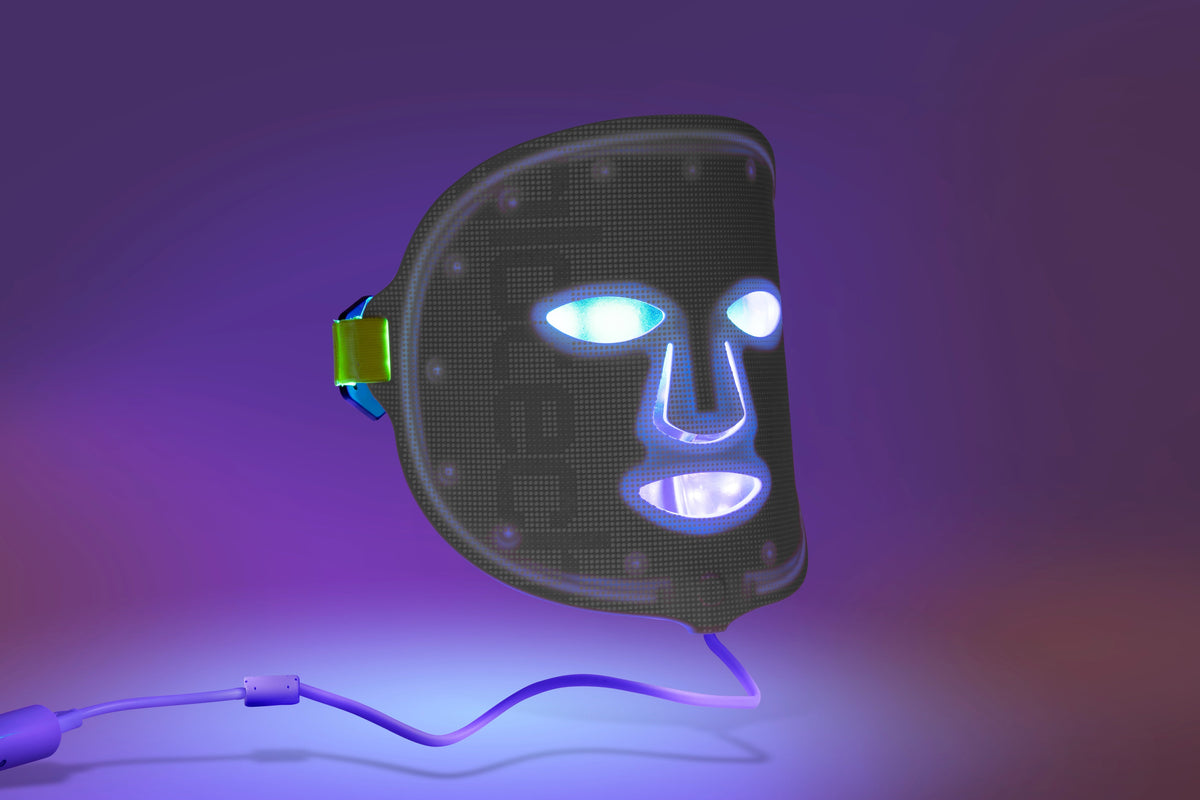
What Does Blue Light Therapy Do?
|
|
Time to read 4 min
|
|
Time to read 4 min
THE-GLO-GUIDE [05-05-2025]
by LED SCIENCE
Acne-prone skin can be frustrating, especially when breakouts return no matter how many creams or cleansers you try. That’s why more people are turning to blue light therapy—an evidence-backed, dermatologist-approved solution that targets acne at the source. Unlike harsh topical treatments, blue light therapy is gentle, non-invasive, and designed to work below the skin’s surface to combat the root causes of blemishes.
But what exactly does blue light therapy do, and how does it help clear stubborn breakouts, reduce inflammation, and minimize excess oil? In this guide, we break down the science, benefits, and results you can expect from blue light therapy —whether you're treating active acne or trying to prevent it in the future.
Table of contents
The benefits of blue light therapy go beyond just clearing up blemishes. This treatment supports skin health in multiple ways and is suitable for ongoing maintenance even after active acne is under control.
Key benefits include:
Killing acne-causing bacteria without antibiotics or harsh chemicals
Calming inflammation to reduce redness and swelling
Helping control oil production to prevent clogged pores
Minimizing pore appearance over time for a smoother texture
Supporting more balanced, clearer skin with fewer flare-ups
These improvements make blue light therapy especially helpful for oily, congested, and sensitive skin types.
Blue light therapy is clinically proven to help treat mild to moderate acne by targeting the bacteria that trigger breakouts. Specifically, it penetrates the upper layers of the skin where acne-causing C. acnes bacteria thrive. When absorbed, the blue light initiates a chemical reaction that targets this bacteria without harming healthy skin tissue.
Several studies have shown impressive results:
A 2004 study found a 65% reduction in acne lesions after four weeks of blue light treatment.
In a 2011 trial, participants using a blue light device twice daily saw faster healing compared to those using a placebo device.
Another clinical review found that consistent use led to improvement in both inflammatory and non-inflammatory acne, including whiteheads and blackheads.
While it’s not a one-time cure, regular sessions can noticeably reduce the frequency, severity, and duration of breakouts over time.
By regulating sebaceous (oil) gland activity, blue light therapy reduces the greasy shine that often contributes to clogged pores and breakouts. Less oil means fewer blocked follicles and smaller-looking pores over time.
Blue light therapy is especially effective for people who struggle with persistent redness, shine, and congested pores. While its main function is to kill acne bacteria, it also calms the skin and balances oil production.
Unlike many topical treatments that can dry or irritate the skin, blue light works gently to calm inflamed skin and even out tone. It’s a great option for those with sensitive skin who need a more soothing approach to managing acne-related symptoms.
While blue light therapy doesn’t provide instant results, it can noticeably improve skin clarity with consistent use. Most people begin to see visible changes after 3 weeks of regular treatment , and results typically continue to improve through weeks 6 to 8.
In clinical studies, participants saw up to a 64% reduction in acne lesions after five weeks of twice-weekly treatments. The key is to stick with a consistent schedule and support the therapy with gentle, non-comedogenic skincare products.
Results timeline:
Weeks 1–2: Less oil and reduced surface shine
Weeks 3–4: Inflammation and active breakouts begin to fade
Weeks 5–8: Smoother, clearer skin tone with fewer blemishes
Continued treatments help prevent new breakouts from forming and support long-term skin clarity.
Yes, when used correctly, blue light therapy is safe for most skin types and tones. It doesn’t involve UV rays, so there’s no risk of skin cancer or sun damage. Treatments are non-invasive, pain-free, and typically don’t require any downtime.
However, it’s important to follow usage instructions and avoid overexposure. Side effects are rare but can include:
Temporary redness or dryness
Mild tingling or tightness
Increased sensitivity if used with other actives
Avoid blue light therapy if you have a condition like lupus, porphyria, or are on light-sensitizing medications. Otherwise, it’s generally considered a safe, effective addition to your skincare routine.
With so many LED light therapy options available, it’s important to choose a device that offers the correct wavelengths and enough power to deliver results. Look for a product that emits blue light in the 405–470nm range and is FDA-cleared for safety and efficacy.
Devices that combine blue and red light are especially useful, as red light helps with inflammation and healing while blue light targets the bacteria.
The GloTech Pro™ LED Mask is one of the most advanced at-home options, featuring medical-grade blue, red, and near-infrared light in one wearable design. It’s comfortable, hands-free, and offers full-face coverage for uniform results. Similarly, the more affordable GloTech Mask Lite™ combines acne-fighting and anti-aging benefits in a compact, easy-to-use format, making clinical-grade skincare more accessible at home.
“I can’t believe how much this mask has cleared my skin in just 3 weeks! My skin is literally glowing and all my dark spots are gone!”
— Adriana, 38 | ⭐ Verified Buyer
Blue light therapy doesn’t just help treat acne, it transforms how your skin looks and feels over time. In before-and-after photos, the differences are striking: reduced redness, fewer blemishes, tighter pores, and a smoother, more even complexion.
Here’s what consistent use can deliver:
Fewer and less severe breakouts
Calmer, less inflamed skin
Balanced oil production and improved clarity
A refreshed, healthier glow with continued use
Whether you’re struggling with hormonal acne, oily skin, or persistent redness, blue light therapy can be a powerful tool to help you take control of your skin—safely and effectively, right from home.

